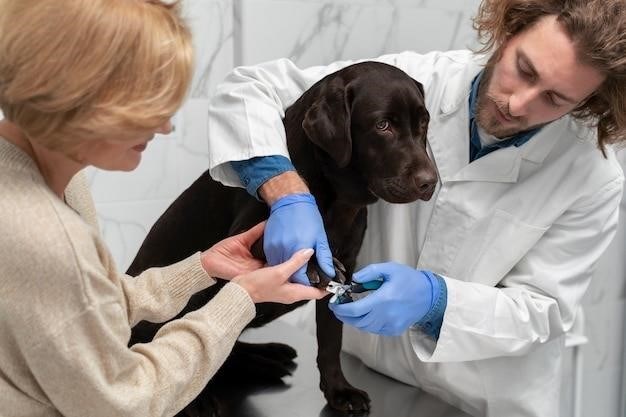
canine manual platelet count
A manual platelet count is a laboratory test that measures the number of platelets in a blood sample. Platelets are small, cell-like particles that are essential for blood clotting. A manual platelet count is performed by using a microscope to count the number of platelets in a specific volume of blood.
Introduction
Platelets, also known as thrombocytes, are essential components of the blood responsible for hemostasis, the process of stopping bleeding. These tiny, anuclear cell fragments, produced in the bone marrow from megakaryocytes, play a crucial role in forming blood clots, thereby preventing excessive blood loss. A platelet count, a standard hematologic test, determines the number of platelets circulating in the blood. A normal platelet count is vital for maintaining proper hemostasis. When the platelet count is low (thrombocytopenia), the body’s ability to form clots is compromised, leading to increased bleeding risk. Conversely, an elevated platelet count (thrombocytosis) can increase the risk of blood clots forming within blood vessels.
Manual platelet counts, though less common than automated methods, are still valuable in certain situations. Manual platelet counts provide a more accurate assessment of platelet morphology and size, which can be crucial for diagnosing certain platelet disorders. Additionally, manual counts are particularly useful in cases where automated methods may be unreliable, such as when platelets are abnormally large or clumped together.
This article will delve into the intricacies of canine manual platelet counting, providing a comprehensive overview of the technique, its importance in clinical practice, and the factors that can influence the results. We will explore the significance of platelet counts in diagnosing and managing various canine health conditions, highlighting the importance of accurate platelet counting in ensuring optimal patient care.
Importance of Platelet Count
The platelet count is a crucial diagnostic tool in veterinary medicine, providing valuable insights into a dog’s hemostatic function and overall health. It helps veterinarians assess the risk of bleeding, identify potential causes of bleeding disorders, and monitor the effectiveness of treatment.
A low platelet count, known as thrombocytopenia, can be a sign of various underlying conditions, including⁚
- Immune-mediated thrombocytopenia (ITP)⁚ An autoimmune disorder where the body’s immune system attacks and destroys platelets.
- Infections⁚ Certain infections, such as rickettsial diseases, can cause a decrease in platelet count.
- Bone marrow disorders⁚ Conditions affecting the bone marrow, where platelets are produced, can lead to reduced platelet production.
- Drug-induced thrombocytopenia⁚ Some medications can suppress platelet production or increase platelet destruction.
- Hemangiosarcoma⁚ A type of cancer that can cause platelet consumption.
Conversely, an elevated platelet count, known as thrombocytosis, can indicate conditions such as⁚
- Inflammation⁚ Inflammatory processes can trigger increased platelet production.
- Iron deficiency anemia⁚ Anemia caused by iron deficiency can lead to increased platelet production.
- Chronic blood loss⁚ Chronic blood loss can stimulate platelet production.

Accurate platelet counts are essential for diagnosing and managing these conditions, ensuring appropriate treatment and monitoring of canine patients.
Methods for Platelet Count
Platelet counts can be determined using various methods, each with its own advantages and limitations. The most common methods include⁚
- Automated Cell Counters⁚ These instruments use impedance or laser-based technology to count and analyze blood cells, including platelets. They are generally faster and more efficient than manual methods, but can be less accurate in certain cases, especially when platelets are abnormally large or clumped.
- Manual Platelet Count⁚ This traditional method involves using a microscope to count platelets in a diluted blood sample. It requires skilled personnel and can be time-consuming, but it provides a more accurate assessment of platelet size and morphology.
- Blood Smear Examination⁚ A blood smear is a thin layer of blood spread on a slide and stained for microscopic examination. While not a precise count, it allows for a visual estimation of platelet numbers and assessment of their size, shape, and distribution. This method can be helpful in identifying platelet clumping and other abnormalities.
- Flow Cytometry⁚ This sophisticated technique uses fluorescent antibodies to identify and count platelets based on their surface markers. It can provide detailed information about platelet activation and function but is not routinely available in most veterinary laboratories.
The choice of method depends on factors such as the availability of equipment, the expertise of the laboratory personnel, and the specific clinical situation. In cases of suspected platelet disorders, it may be necessary to use multiple methods to obtain a comprehensive assessment of platelet function.
Manual Platelet Count Technique
The manual platelet count technique involves diluting a blood sample with a specific solution, loading the diluted blood into a hemocytometer, and counting the number of platelets within a defined area under a microscope. The steps involved in this procedure are as follows⁚
- Sample Collection⁚ Collect a blood sample from the animal using a standard venipuncture technique. Ensure the sample is collected into an appropriate anticoagulant, such as EDTA, to prevent clotting.
- Dilution⁚ Dilute the blood sample with a specific solution, such as a platelet diluent, to achieve a suitable concentration for counting. The dilution factor should be chosen based on the expected platelet count.
- Loading the Hemocytometer⁚ Load the diluted blood into a hemocytometer, a specialized glass slide with a grid etched onto its surface. This allows for the precise counting of cells within a known volume.
- Microscopic Examination⁚ Examine the hemocytometer under a microscope at a high magnification. Count the number of platelets within a specific area, such as a central square or a specific number of smaller squares, depending on the hemocytometer design.
- Calculation⁚ Calculate the platelet count per microliter of blood using the dilution factor and the number of platelets counted. This involves multiplying the number of platelets counted by the dilution factor and dividing by the volume of blood counted.
It’s important to note that manual platelet counts can be influenced by factors such as platelet clumping, debris, and the experience of the technician. Therefore, it’s crucial to have a well-trained technician perform the procedure and to double-check the results for accuracy.
Factors Affecting Manual Platelet Count
The accuracy of a manual platelet count can be influenced by several factors, which can lead to either overestimation or underestimation of the true platelet count. It’s crucial to be aware of these factors to minimize their impact and ensure the reliability of the results.
Platelet Clumping⁚ Platelets can clump together, especially in samples that have been stored for a prolonged period or if the anticoagulant used is not optimal. Clumping can lead to an underestimation of the platelet count because clumps are counted as single platelets. Proper handling and storage of blood samples can help minimize clumping;
Debris⁚ Blood samples can contain debris, such as cell fragments, bacteria, or other particles that can be mistaken for platelets during microscopic examination. This can lead to an overestimation of the platelet count. Careful microscopic examination and experience in differentiating platelets from debris are essential.
Technician Experience⁚ The experience and skill of the technician performing the manual platelet count can significantly affect the accuracy of the results. A well-trained technician can accurately differentiate platelets from other blood cells and debris, ensuring a reliable count. Proper training and quality control measures are crucial to maintain consistency in the results.
Instrument Calibration⁚ If automated analyzers are used to perform platelet counts, proper calibration and maintenance of the instrument are essential for accurate results. Regular calibration and maintenance ensure that the instrument accurately measures the platelet volume and differentiates platelets from other blood cells.
Understanding and addressing these factors is essential to achieve accurate manual platelet counts in canine patients.
Interpretation of Results
Interpreting the results of a manual platelet count involves comparing the obtained count to the established reference range for canine platelets. This range can vary slightly depending on factors such as the age, breed, and overall health of the dog. Generally, a normal platelet count in dogs falls between 200,000 and 500,000 platelets per microliter (µL) of blood. However, it’s essential to consult veterinary laboratory reference ranges for specific guidelines.
A platelet count below the normal range indicates thrombocytopenia, which signifies a low platelet count. Thrombocytopenia can arise from various factors, including immune-mediated destruction of platelets, decreased platelet production in the bone marrow, or increased platelet consumption due to conditions like disseminated intravascular coagulation (DIC).
Conversely, a platelet count above the normal range indicates thrombocytosis, signifying an elevated platelet count. Thrombocytosis can be caused by reactive processes such as inflammation, iron deficiency anemia, or recovery from thrombocytopenia. It can also be associated with certain types of cancer.
While the platelet count provides valuable information about platelet number, it’s crucial to consider other laboratory findings and clinical signs when interpreting the results. For example, a low platelet count may not always indicate a bleeding problem if the dog doesn’t exhibit any signs of bleeding. Conversely, a normal platelet count doesn’t rule out a platelet function disorder, which can impair blood clotting despite a normal platelet count.
Therefore, a comprehensive evaluation involving a thorough history, physical examination, and additional laboratory tests, including coagulation tests and blood smear analysis, is necessary for a complete interpretation of platelet count results and accurate diagnosis.
Clinical Significance of Platelet Count
The platelet count holds significant clinical importance in veterinary medicine, particularly in diagnosing and managing bleeding disorders in dogs. Platelets, tiny cell fragments produced in the bone marrow, play a crucial role in hemostasis, the process of stopping bleeding. They adhere to damaged blood vessels, forming a plug that helps seal the wound and initiate the formation of a blood clot.
A low platelet count, or thrombocytopenia, can lead to excessive bleeding, even from minor injuries. This condition can manifest as spontaneous bleeding into the skin (petechiae), mucous membranes (epistaxis, gum bleeding), or internal organs. Thrombocytopenia can have various underlying causes, including immune-mediated destruction of platelets, decreased platelet production in the bone marrow, or increased platelet consumption due to conditions like disseminated intravascular coagulation (DIC).
Conversely, an elevated platelet count, or thrombocytosis, can indicate an underlying inflammatory or reactive process. While not always a cause for concern, thrombocytosis can sometimes be associated with certain types of cancer. Therefore, it’s crucial to investigate the underlying cause of thrombocytosis to determine the appropriate course of action.
Monitoring the platelet count in dogs is particularly essential in cases of suspected bleeding disorders, infectious diseases, and certain drug therapies that can affect platelet production or function. A manual platelet count, when performed accurately and interpreted in conjunction with other clinical findings, provides valuable information for diagnosing and managing platelet disorders in dogs.
In conclusion, a manual platelet count remains a valuable tool in veterinary medicine, particularly for canine patients. Although automated methods are now widely available, manual counting offers advantages in specific situations, such as when large platelets are suspected or when assessing platelet morphology. The technique provides a reliable means of determining platelet number and identifying abnormalities that may indicate underlying disease.
Understanding the clinical significance of platelet count is crucial for veterinarians. A low platelet count can signify bleeding disorders, while an elevated count may point to inflammation or reactive processes. By carefully interpreting manual platelet counts in conjunction with other clinical findings, veterinarians can make informed diagnoses and manage bleeding disorders effectively.
Further research and development of new technologies aimed at improving the accuracy and efficiency of platelet counting are continuously evolving. As our understanding of platelet function and disorders continues to grow, manual platelet counts will likely remain a valuable tool in veterinary diagnostics, helping to ensure the well-being of canine patients.